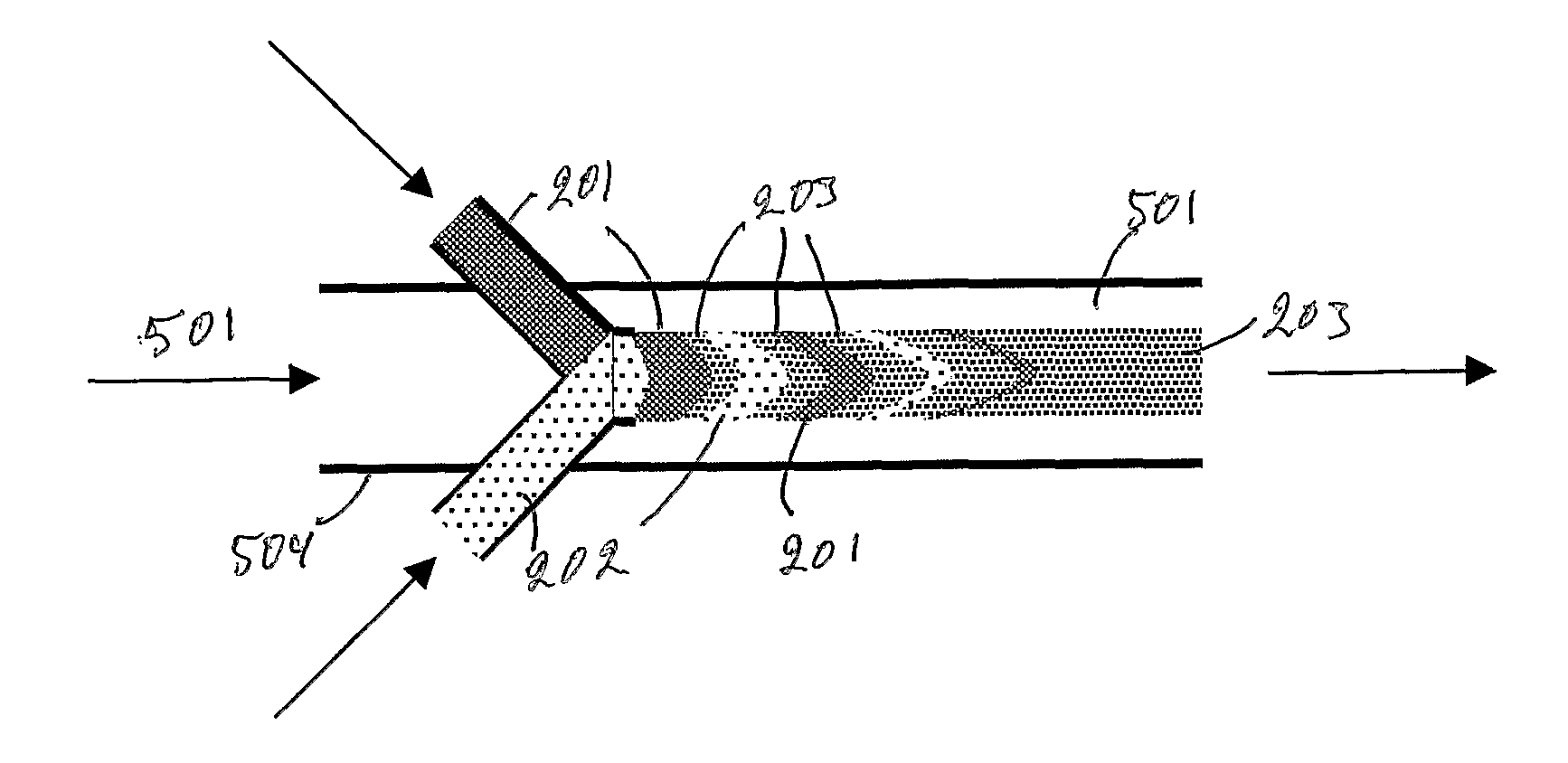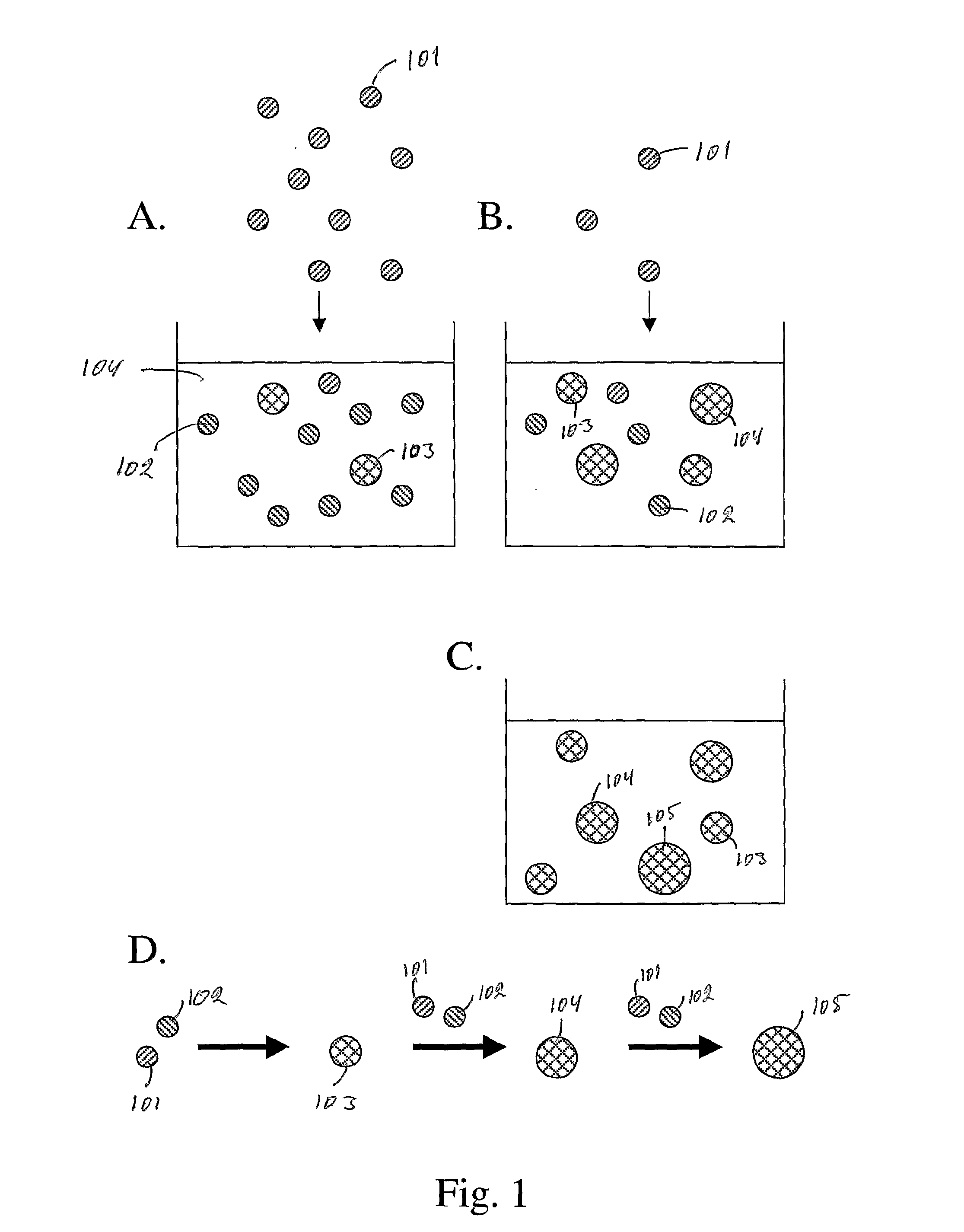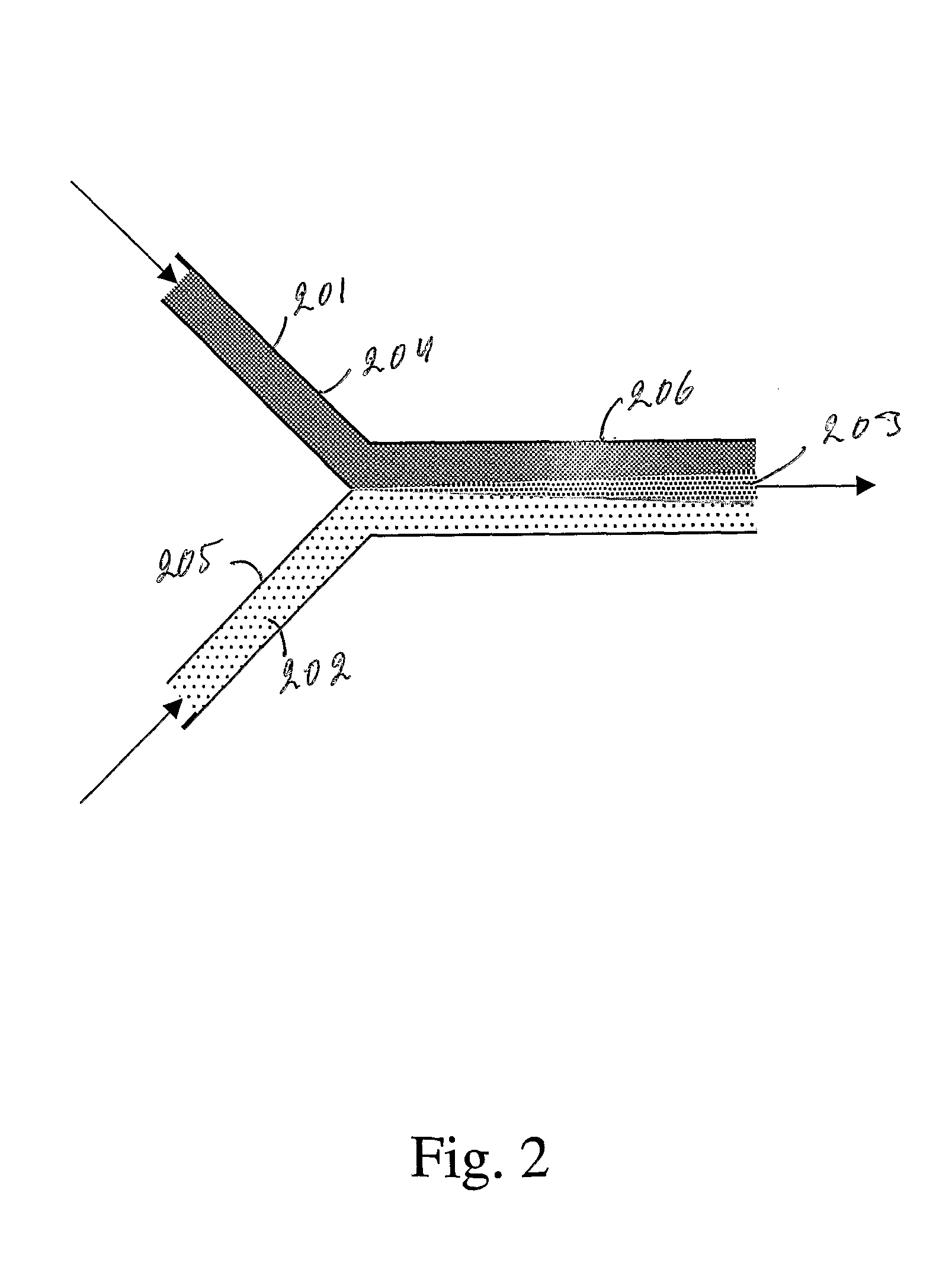Methods and Devices for Facile Fabrication of Nanoparticles and Their Applications
a nanoparticle and fabrication method technology, applied in the direction of measuring apparatus housings, crystal growth processes, mixers, etc., can solve the problems of specialized equipment, dangerous reaction conditions, and often hazardous reagents, and achieve the effect of reducing some drag and improving mixing efficiency
- Summary
- Abstract
- Description
- Claims
- Application Information
AI Technical Summary
Benefits of technology
Problems solved by technology
Method used
Image
Examples
example 1
Fabrication of Cadmium Sulfide
[0110] First, the following solution were made: 4.44 g of sodium bis(2-ethyl hexyl)sulfosuccinate (AOT) in iso-octane in a 100 ml volumetric flask (0.1 M), 332 mg of sodium sulfide in 10 ml of water in a 10 ml volumetric flask (0.4 M), and 1146 mg of cadmium nitrate in water in a 10 ml volumetric flask (0.4 M). Two different preparations of cadmium sulfide nanoparticles were made from these stock solutions. [0111] A. Two 10 ml aliquots of AOT solution were measured into two test tubes. Into one of these was added 80 μl of cadmium nitrate solution, and into the other 80 μl sodium sulfide solution with good mixing. The solutions were allowed to stabilize for 2 hours. After the equilibration the solutions were put into a microfluidic reactor, and using a syringe pump, the two components were pumped in 0.2 μl increments as alternating pulses via 3-way connector into a Teflon tube (2 mm diameter, 1.5 m long). The pumping speed was 0.4 ml / min for both soluti...
example 2
[0114] The fabrication was performed exactly as in Example 1, but the receiving vial did not contain any capping reagent. Instead the product solution (20 ml) as such, and 4 mg of niobium isopropoxide in 5 ml of isooctane / ethanol 4:1 were pumped into the microfluidic reactor. In each pumping cycle 0.8 μl of CdS nanoparticle solution, and 0.2 μl of niobium ethoxide solution were pumped. The product solution that contained niobium oxide coated CdS nanoparticles was put once more in the starting vial, and this time the other component was a reverse micellar solution made of adding 40 μl of poly-L-lysine (PLL, 2 mg) water solution into 10 ml of AOT base solution. In one cycle 0.5 μl of nanoparticle solution, and 0.2 μl of PLL solution were pumped in the mixing capillary. Three layer nanoparticles were isolated by adding 10 ml of water, separating the organic layer, and dialyzing the water phase three times against 200 ml of water. These CdS core nanoparticles can be attached with standa...
example 3
[0115] Janus(6v8) (FIG. 12) was dissolved into ethanol, concentration was 5 mg / ml. Merocyanine 540 was added into the solution to the final concentration of 0.5 mol % of janus(6v8). This solution was injected into ten fold excess of water in 0.1 μl portions. The liposomes were dialyzed in line first against 10% ethanol in water and then against pure water. Similarly, liposomes were prepared of all janus molecules in FIG. 12 with and without merocyanine 540. Especially janus(6v8) liposomes have sharp phase transition at 39° C. that can be detected with differential scanning calorimeter. The fluorescence of merocyanine 540 increased at the same temperature, which indicates that merocyanine 540 penetrates into the alkyl chain layer. Thus, these liposomes are ideal temperature activated drug carriers.
PUM
| Property | Measurement | Unit |
|---|---|---|
| thickness | aaaaa | aaaaa |
| thickness | aaaaa | aaaaa |
| frequency | aaaaa | aaaaa |
Abstract
Description
Claims
Application Information
 Login to View More
Login to View More - R&D
- Intellectual Property
- Life Sciences
- Materials
- Tech Scout
- Unparalleled Data Quality
- Higher Quality Content
- 60% Fewer Hallucinations
Browse by: Latest US Patents, China's latest patents, Technical Efficacy Thesaurus, Application Domain, Technology Topic, Popular Technical Reports.
© 2025 PatSnap. All rights reserved.Legal|Privacy policy|Modern Slavery Act Transparency Statement|Sitemap|About US| Contact US: help@patsnap.com



